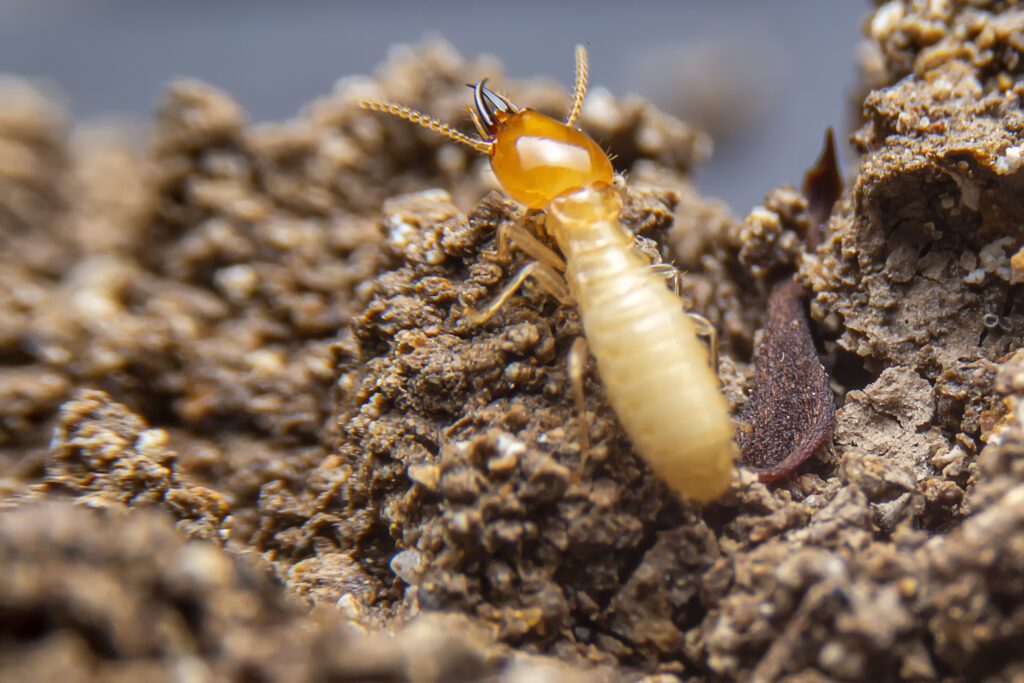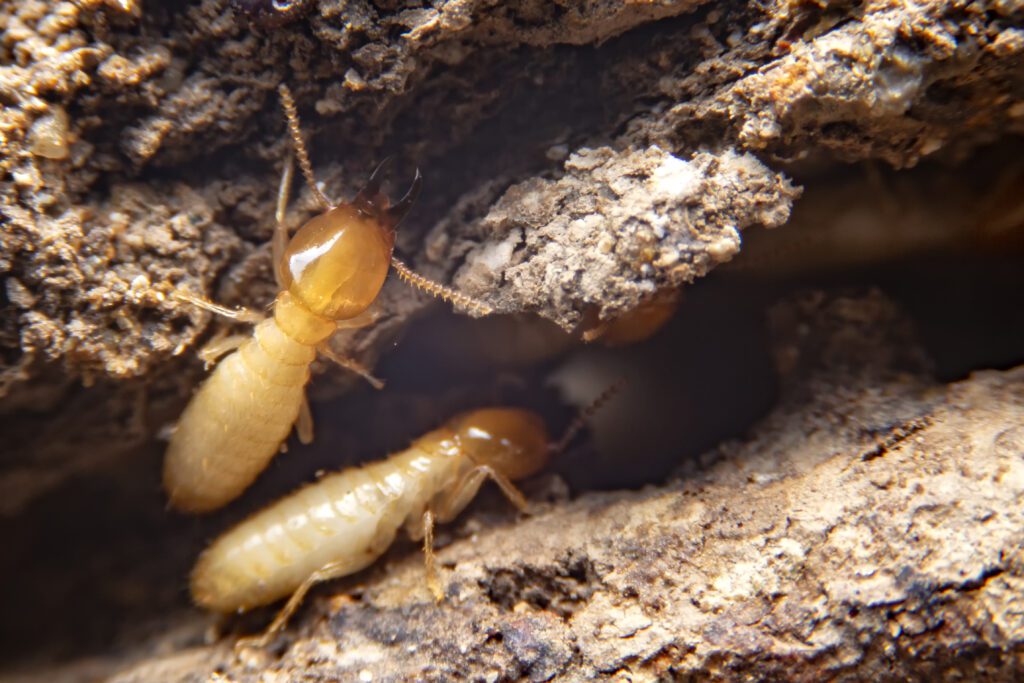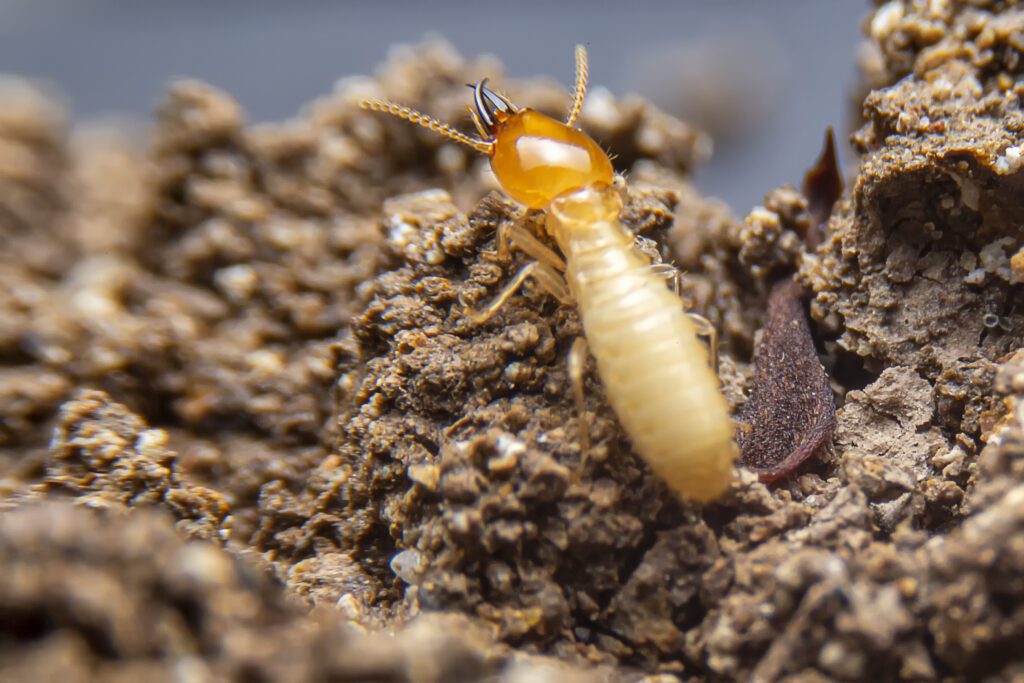How long termites have been on earth? Termites, tiny creatures hidden in soil and wood, are far more amazing than most of us realize. Stretching back over 250 million years, these extraordinary insects have weathered cataclysmic planetary changes, outlasting the dinosaurs and thriving to this day. How did they become one of nature’s oldest success stories? Alongside their fascinating contributions to ecosystems, they also present significant challenges when they invade human structures. Here, we’ll explore their rich history, ecological role, and practical tips for managing infestations.
Why Do Termites Exist?
Termites may not stand out to the average observer, but their ecological role is indispensable. They act as natural recyclers, breaking down dead plant material like wood and leaf litter, enriching the soil with nutrients. This decomposition promotes plant growth, maintains biodiversity, and plays a major role in nutrient cycling. Without termites, ecosystems would struggle to process organic matter efficiently.

How Long Have Termites Been on Earth?
Fossil evidence shows that termites have existed for over 145 million years, dating back to the Cretaceous period, so, how long termites have been on earth conquering different territories is simply insane. They are believed to have evolved from ancient wood-eating cockroach ancestors. Considering their ability to adapt to changing environments, it’s no wonder they’ve persisted for so long.
When Did Termites First Appear on Earth?
Termites likely emerged during the Late Jurassic or Early Cretaceous period, around 150 million years ago. Their earliest fossils reveal their existence alongside other ancient insects, pointing to a shared history with dinosaurs. Over time, termites developed the complex social systems that contribute to their evolutionary success.
Nature’s Survivors: How Termites Endured Mass Extinctions
Over their 250-million-year history, termites have survived not one but multiple mass extinction events. The most devastating was the Permian-Triassic extinction, wiping out about 90% of Earth’s species. Yet termites persisted, using their underground colonies and symbiotic feeding strategies to beat the odds.
Being resilient recyclers of wood and plant material gave them a unique advantage. When environmental upheavals destroyed other sources of sustenance, termites thrived by breaking down the organic debris that remained. Their social organization and ability to stay concealed underground further ensured their survival.
What Is a Termite’s Biggest Enemy?
Among termites’ most formidable challenges are ants, their main natural predators. Ants frequently invade termite colonies, preying on the workers and soldiers. This constant danger has driven termites to evolve complex defensive strategies, including building protective tunnels and deploying specialized soldier castes to guard their homes. The intense predator-prey relationship between ants and termites has profoundly influenced their ecological behaviors.

Comparing Termites with Other Insects
| Feature | Termites | Ants | Cockroaches |
|---|---|---|---|
| Age on Earth | Over 250 million years | 100–150 million years | Over 300 million years |
| Social Structure | Complex, with kings and queens | Complex, with queens only | Solitary or loosely social |
| Diet | Cellulose (wood, plants) | Omnivorous (plants, insects) | Omnivorous (scavengers) |
| Ecological Role | Decomposers | Predators, scavengers | Scavengers, decomposers |
| Colony Size | Up to millions | Up to millions | Small groups or individuals |
What Termites Teach Us About Resilience in Nature
Termites are and a testament to the power of cooperation and adaptation. They live in colonies that function more like superorganisms than groups of individuals. Each termite has a specialized role, whether it’s foraging, defending the nest, or reproducing, ensuring the colony’s collective survival.
Central to this resilience is the termite queen, the reproductive powerhouse of the colony. Capable of laying up to 30,000 eggs per day and living for decades, she ensures the colony’s longevity and growth, and she insanely does it for a long while, since the termite queen can live up to five decades!
Additionally, termites have perfected the art of sustainability. Their ability to build vast, regulated mounds allows them to thrive in extreme environments, from deserts to rainforests.
Do Termites Exist Everywhere?
Termites are found on every continent except Antarctica, highlighting their adaptability. They thrive mainly in tropical and subtropical climates, but some species have even penetrated colder regions by living within manmade structures like heated homes. For example, the U.S. hosts about 44 species (excluding Alaska), while Africa boasts over 1,000 species. Their global presence underscores their ecological importance and versatility.
The Secret Superpowers That Help Termites Thrive
What’s the secret to their staying power? Termites have evolved unique adaptations that make them extraordinarily resilient.
- Cellulose Digestion: Through a symbiotic relationship with gut microorganisms like bacteria and protozoa, termites break down tough plant fibers.
- Architectural Mastery: Termite mounds feature natural ventilation systems that regulate temperature and humidity, enabling survival in harsh conditions.
- Social Cooperation: Their caste system ensures efficient division of labor, from workers and soldiers to reproductive alates.
These adaptations allow termites to colonize diverse environments worldwide.

Are Termites Threatening Your Property?
While termites contribute significantly to ecosystems, their ability to invade human structures makes them highly destructive pests. Known to cause billions of dollars in damages annually, termites often target wooden structures, degrading them from the inside out. This hidden damage leads to costly repairs and potential safety issues.
If you’re based in Miami FL or Broward FL Counties, IPest Control Inc. can help. Offering WDO Inspections and Termite Pest Control, and specialized in preventing and resolving termite infestations, keeping your property protected. Your home will remains safe from these tiny intruders with IPest Control Inc, all while supporting eco-friendly pest management practices.
Actionable Tips to Prevent Termite Infestations
Protect your home with these proactive measures:
- Monitor for Signs: Look for mud tubes, discarded wings, or hollow-sounding wood.
- Reduce Moisture: Fix leaks and ensure proper drainage around your home.
- Seal Entry Points: Close cracks in foundations or walls to block termite access.
- Remove Wood Debris: Clear fallen branches or stored lumber near your property.
- Schedule Inspections: Regular checks by professionals catch infestations early.
These steps, paired with expert support, can safeguard your home.
From Prehistoric Forests to Modern Cities
Termites have an incredible story to tell. From their humble beginnings more than 145 million years ago to their role as ecosystem engineers in modern cities, they inspire awe with their resilience and adaptability. Though they offer essential ecological benefits, termites are a force to be reckoned with when it comes to property damage.
Should they encroach on your space, remember, it’s essential to act quickly. Call experts pest control like IPest Control Inc. to manage the issue while minimizing harm to the environment. Now that your know how long termites have been on earth, keep in mind how long they could live in your house! Termite control not only protects your home but also preserves a harmonious balance between humans and nature!
Frequent Questions About Termites and other Insects
Are Ants or Termites Older?
Termites are older than ants. While termites have been around for over 250 million years, ants appeared around 100–150 million years ago. This age gap highlights termites’ remarkable evolutionary success.
What Is the Oldest Insect on Earth?
The oldest known insect is the cockroach, existing for over 300 million years. Termites, believed to have evolved from ancient cockroach ancestors, are a close second at 250 million years.
How Do Termites Live So Long?
Termites’ longevity stems from their social structure, underground colonies, and symbiotic relationships with microorganisms. These adaptations help them survive environmental changes and predators, contributing to their ancient lineage.
